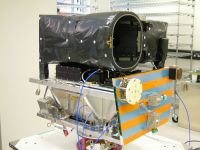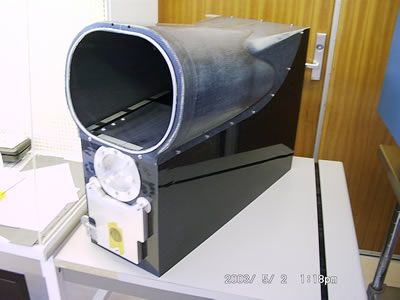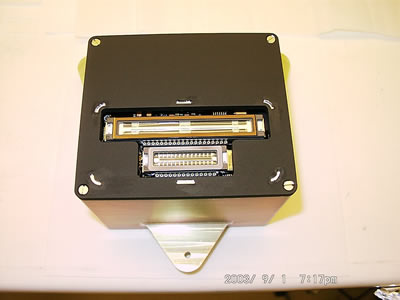RAL Space Involvement
High-resolution camera
Subject
Earth Observation
Main Objectives
Creating smaller better technology
Launch Date
28 Oct 2005
Partners
QinetiQ, SSTL, Infoterra
Further Project Information
Overview

TopSat was launched on 27 October 2005 from Plesetsk Cosmodrome in Northern Russia. RAL Space have developed a high-resolution optical camera for the TopSat programme, producing 2.5m resolution panchromatic images and 5m resolution colour images.
We worked closely with the mechanical, optical and electronic groups at RAL to develop the low cost design. The mission is designed to demonstrate the capabilities of small satellites for classically high value remote sensing missions.
TopSat is a very compact
and light which allows it to be carried onboard a microsatellite giving
a very low cost solution with high performance. The system
comprises a push-broom imager based on a three-mirror off-axis
telescope, fitted with a long, linear, Charge Coupled Device (CCD)
detector in its focal plane. To achieve image resolution of this order
from space requires highly accurate alignment of the optical system and
extremely stable support structures for the optical components.
Positional accuracies of about 10 microns in the placement of components are needed and must be maintained throughout launch and subsequent operation in space. Optical Systems
within RAL Space designed the optical system and focal plane
electronics. The telescope was aligned using complex opto-mechanical
alignment techniques involving CMM and interferometry.
Technical information
There is increasing demand for affordable, high resolution Earth imagery and, recently, for the space-borne camera systems to produce it. However, the high cost of such instruments is currently restricting the extent to which these images are exploited commercially.
 RAL Space has collaborating with QinetiQ in the development of a modular design of compact, low cost optical camera, imaging to 2.5 metres ground sampling resolution. The design is scalable, to satisfy various mission requirements, and is capable of further development into a system of 1 metre resolution.
RAL Space has collaborating with QinetiQ in the development of a modular design of compact, low cost optical camera, imaging to 2.5 metres ground sampling resolution. The design is scalable, to satisfy various mission requirements, and is capable of further development into a system of 1 metre resolution.
The system comprises a push-broom imager based on a three-mirror off-axis telescope, fitted with a long, linear, Charge Coupled Device (CCD) detector in its focal plane. To minimize cost, it is sufficiently compact to be carried aboard a microsatellite in the 100 to 200 kg range.
 To achieve image resolution of this order from space requires highly accurate alignment of the optical system and extremely stable support structures for the optical components. Positional accuracies of about 10 microns in the placement of components are needed and must be maintained throughout launch and subsequent operation in space.
To achieve image resolution of this order from space requires highly accurate alignment of the optical system and extremely stable support structures for the optical components. Positional accuracies of about 10 microns in the placement of components are needed and must be maintained throughout launch and subsequent operation in space.
The main structure of the instrument uses panels of carbon fibre/cyanate ester material to form a lightweight, rigid support for the optical components.
The instantaneous field of view of the optical system is ± 1.2 ´ ± 0.35 degrees, providing a ground swath width of 25 km from an altitude of 600 km. Detector arrays up to 70 mm in length can be used.
The main design parameters of the Baseline 2.5m GSD Camera System are:
- Camera Focal Length (mm)
- Ground Sampling Distance (m)
- 2.5 (from 600 km altitude)
- CCD Pixel size (µm) 7
- Entrance Pupil Diameter (mm) 200
- F/number 8.40
- Camera Field of View ±1.2 ° × ±0.35 °
- Focal Plane Field of View ±35 mm × ±10 mm
- Swath (km) 25 (from 600 km altitude)
- Ground Speed (km/s ) 6.908 (from 600 km altitude)
- Time to travel 2.5m ( ms) 0.362
- Estimated SNR without Time Delayed Integration 48 (panchromatic 0.4-0.8mm, Sun angle = 30 ° , Diffuse reflectance = 0.2.)
- Instrument Size (mm) 677 × 600 × 300
- Estimated Instrument Mass (including electronics) (kg) 32 Kg
For more information please contact: RAL Space Enquiries
